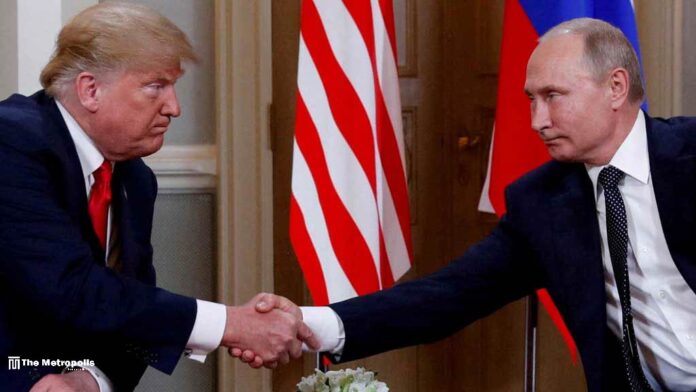Donald Trump revealed that both Russian President Vladimir Putin and Ukrainian President Volodymyr Zelensky expressed their wish for peace during separate phone calls with him on Wednesday. Following these discussions, Trump directed top U.S. officials to begin negotiations to end the war in Ukraine.
The talks came after Trump’s defense secretary suggested that Kyiv might need to abandon its longstanding goals of NATO membership and regaining all the territory seized by Russia, signaling a significant shift in Washington’s approach to the conflict.
After a lengthy conversation with Putin, Trump shared that the Russian leader, who initiated the full-scale invasion of Ukraine in 2022, expressed a desire to end the war and discussed the possibility of a ceasefire in the near future.
Trump stated, “He wants it to end. He doesn’t want to end it and then go back to fighting six months later.” He added, “I think we’re on the way to getting peace. I think President Putin wants peace, President Zelensky wants peace, and I want peace. I just want to see people stop getting killed.”
While Trump has often claimed he could end the war quickly, he has not specified how he would do so.
The Kremlin confirmed that Putin and Trump had agreed to meet, with Putin inviting Trump to Moscow. Trump indicated that their first meeting would “probably” take place soon in Saudi Arabia.
In a post on his social media platform, Trump shared that Secretary of State Marco Rubio, CIA Director John Ratcliffe, National Security Adviser Michael Waltz, and Middle East envoy Steve Witkoff would lead efforts to negotiate an end to the war.
Trump later spoke with Zelensky, and the Ukrainian president’s office reported the conversation lasted about an hour. Zelensky posted on X, “I had a meaningful conversation with @POTUS. We… talked about opportunities to achieve peace, discussed our readiness to work together …and Ukraine’s technological capabilities… including drones and other advanced industries.”
Since the early stages of the conflict, no formal peace talks have taken place. Trump’s predecessor, Joe Biden, committed significant military aid to Kyiv but had no direct contact with Putin after the invasion.
Russia currently occupies about one-fifth of Ukraine and demands that Kyiv relinquish more territory and adopt permanent neutrality in any peace deal. Ukraine insists on the withdrawal of Russian forces from occupied territories and seeks NATO membership or equivalent security guarantees to prevent further Russian aggression.
European powers, including Britain, France, and Germany, emphasized on Wednesday that they must be involved in any future negotiations, advocating for a fair agreement with security guarantees to ensure lasting peace. They also expressed their readiness to bolster Ukraine’s position.
Earlier, Defense Secretary Pete Hegseth made a blunt statement about the new administration’s stance on the war, declaring that Ukraine could not realistically expect to regain its pre-2014 borders or join NATO. He stated, “We want, like you, a sovereign and prosperous Ukraine. But we must start by recognizing that returning to Ukraine’s pre-2014 borders is an unrealistic objective.”
Russia annexed Crimea in 2014, which Ukraine and many Western nations regard as occupied territory.
Hegseth emphasized that any lasting peace must include “robust security guarantees to ensure that the war will not begin again,” but clarified that U.S. troops would not be deployed to Ukraine as part of such guarantees.
Zelensky has recently proposed a deal where the U.S. would invest in Ukraine’s mineral resources to help secure the country post-conflict. Trump’s Treasury Secretary Scott Bessent, visiting Kyiv on Wednesday, said such a deal could act as a “security shield” for Ukraine after the war.
Trump also mentioned that Marco Rubio and Vice President JD Vance would discuss the war on Friday in Munich during the annual security conference, which Ukrainian officials were expected to attend.
This new diplomatic push follows a U.S.-Russia prisoner swap that began on Tuesday, with the Kremlin indicating that it could help build trust between the two nations.



